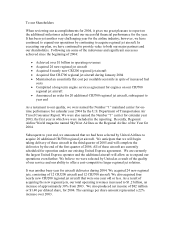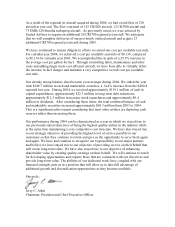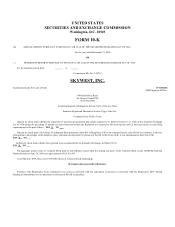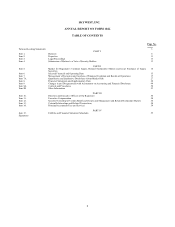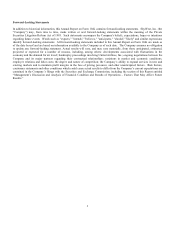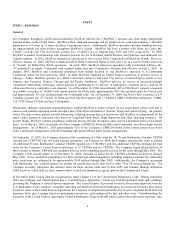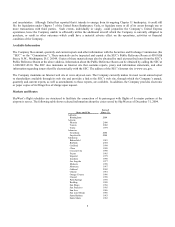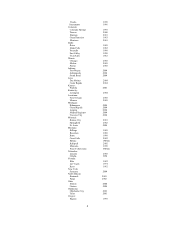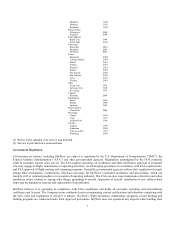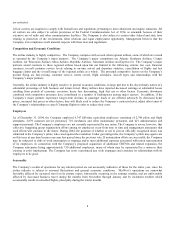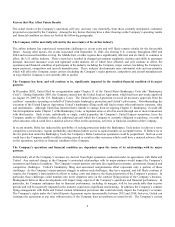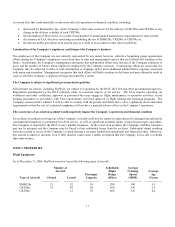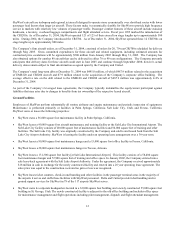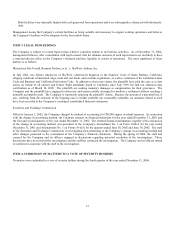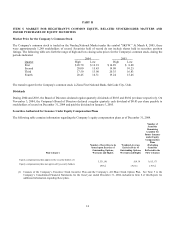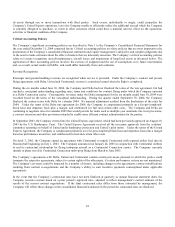SkyWest Airlines 2004 Annual Report Download - page 10
Download and view the complete annual report
Please find page 10 of the 2004 SkyWest Airlines annual report below. You can navigate through the pages in the report by either clicking on the pages listed below, or by using the keyword search tool below to find specific information within the annual report.8
are restricted.
All air carriers are required to comply with federal laws and regulations pertaining to noise abatement and engine emissions. All
air carriers are also subject to certain provisions of the Federal Communications Act of 1934, as amended, because of their
extensive use of radio and other communication facilities. The Company is also subject to certain other federal and state laws
relating to protection of the environment, labor relations and equal employment opportunity. Management believes that the
Company is in compliance in all material respects with these laws and regulations.
Competition and Economic Conditions
The airline industry is highly competitive. The Company competes with several other regional airlines, some of which are owned
or operated by the Company’s major partners. The Company’s major competitors are Atlantic Southeast Airlines, Comair
Airlines, Air Wisconsin Airlines, Mesa Airlines, Republic Airlines, Transtates Airlines and Express Jet. The Company’s major
partners award contracts to these regional airlines based upon but not limited to the following criteria; low cost, financial
resources, overall customer service levels relating to on-time arrival and departure statistics, cancellation of flights and lost
baggage claims and the overall image of the regional airline as a whole. The principal competitive factors on the Company’s
prorate flying are fare pricing, customer service, routes served, flight schedules, aircraft types and relationships with the
Company’s major partners.
Generally, the airline industry is highly sensitive to general economic conditions, in large part due to the discretionary nature of a
substantial percentage of both business and leisure travel. Many airlines have reported decreased earnings or substantial losses
resulting from periods of economic recession, heavy fare discounting, high fuel use or other factors. Economic downturns
combined with competitive pressures have contributed to a number of bankruptcies among major carriers. In addition, if the
Company’s major partners experience longer-term declines in passenger loads or are affected adversely by decreased ticket
prices, increased fuel prices or other factors, they will likely seek to reduce the Company’s contracted rates, adjust other terms of
the Company’s relationships or cancel Company flights in order to reduce their costs.
Employees
As of December 31, 2004, the Company employed 6,747 full-time equivalent employees consisting of 2,746 pilots and flight
attendants, 2,879 customer service personnel, 701 mechanics and other maintenance personnel, and 421 administration and
support personnel. The Company’s employees are not currently represented by any union. The Company is aware, however, that
collective bargaining group organization efforts among its employees occur from time to time and management anticipates that
such efforts will continue in the future. During 2004, the question of whether or not to join an officially recognized union was
submitted to the Company’s pilots, who voted against the resolution. Under governing rules, the Company’s pilots may again vote
on this issue at any time because one year has passed since the previous vote. If unionization efforts are successful, the Company
may be subjected to risks of work interruption or stoppage and/or incur additional expenses associated with union representation
of its employees. In connection with the Company’s proposed acquisition of additional CRJ700s and related expansion, the
Company anticipates hiring approximately 750 additional employees, many of whom may be represented by a union in their
existing or prior employment. The Company has never experienced any work stoppages and considers its relationships with its
employees to be good.
Seasonality
The Company’s results of operations for any interim period are not necessarily indicative of those for the entire year, since the
airline industry is subject to seasonal fluctuations and general economic conditions. SkyWest’s operations are somewhat
favorably affected by increased travel on its prorate routes, historically occurring in the summer months, and are unfavorably
affected by decreased business travel during the months from November through January and by inclement weather which
occasionally results in cancelled flights, principally during the winter months.

